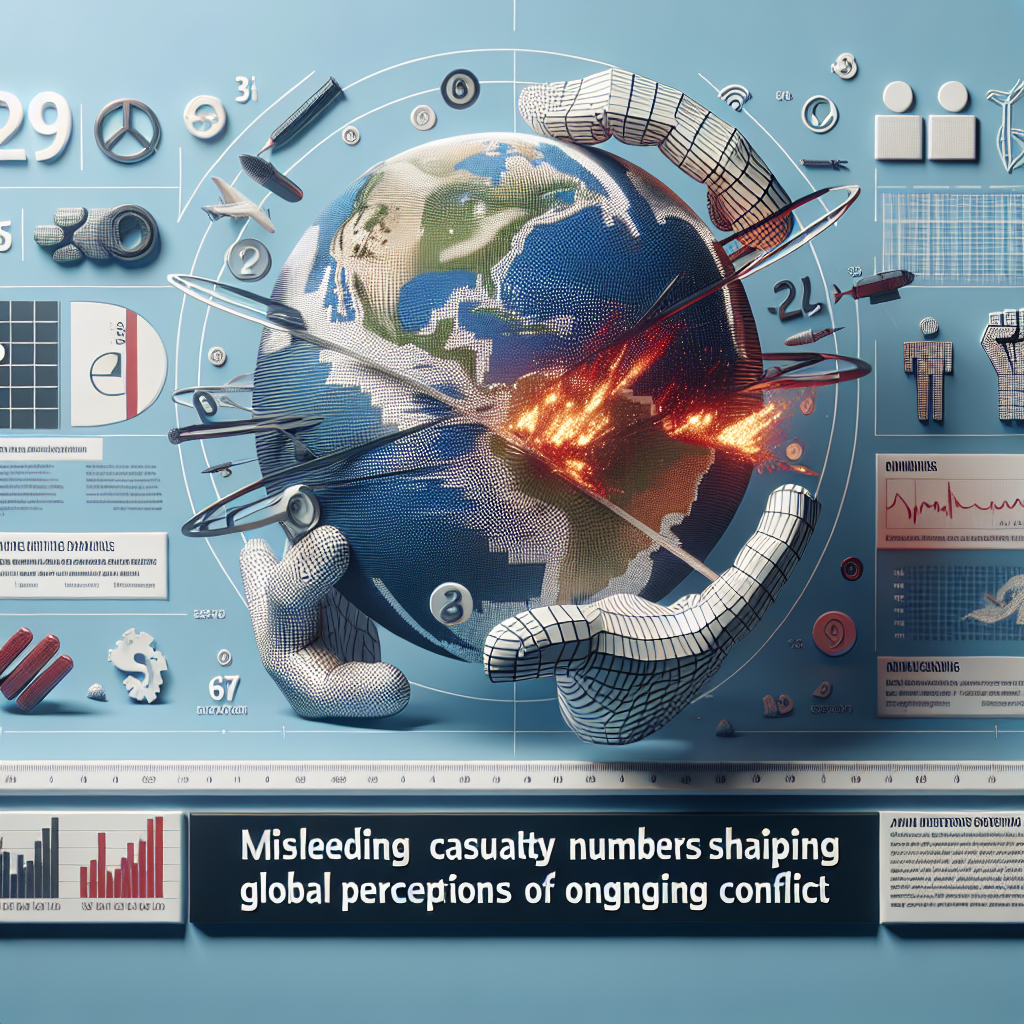Revealed: How Misleading Casualty Numbers from Hamas Are Shaping Global Perceptions of the Ongoing Conflict
The conflict between Hamas and Israel has been a focal point of international attention, sparking heated debates and emotional responses across the globe. As the situation evolves, so do the narratives surrounding it, particularly when it comes to casualty figures. Recent investigations have suggested that Hamas has been inflating casualty numbers to garner sympathy and support from the international community. But how is this affecting global perceptions of the conflict? Let’s dive deeper into this troubling trend.
The Role of Casualty Numbers in Conflict Narratives
Casualty numbers play a crucial role in shaping public opinion during any conflict. They serve as a metric of human suffering and are often used by media outlets, governments, and advocacy groups to illustrate the severity of a situation. In the case of the ongoing conflict, inflated or misleading casualty figures can lead to a skewed understanding of the events on the ground. This is particularly significant in today's 24-hour news cycle, where information is rapidly disseminated and often lacks the context necessary for proper interpretation.
Hamas has reportedly utilized this tactic to strengthen its narrative and portray itself as a victim of aggression. By exaggerating the number of casualties, they aim to evoke sympathy from the global audience and to potentially sway international diplomatic efforts in their favor. This manipulation of numbers not only affects public sentiment but also influences political decisions, as governments may feel pressure to act based on these skewed statistics.
Analyzing the Data: The Claims vs. Reality
Recent analyses conducted by independent research organizations have questioned the legitimacy of the casualty figures released by Hamas. For instance, discrepancies have emerged between the numbers reported by Hamas and those verified by international observers and humanitarian organizations. While Hamas claims thousands of casualties, independent investigations suggest that these figures may be inflated by as much as 40-50%. Such deviations raise serious questions about the accuracy of the statistics being presented to the world.
Moreover, the methodology behind how these numbers are gathered is often opaque. Reports indicate that Hamas may include not only combatants but also civilians in their casualty counts, sometimes labeling members of their military wing as civilians. This practice not only skews the data but also complicates the humanitarian narrative, making it difficult for outside observers to gauge the true extent of human suffering.
The Impact on International Relations
The manipulation of casualty numbers has far-reaching implications for international relations. Governments and organizations often rely on these figures to formulate their responses, whether they involve humanitarian aid, sanctions, or diplomatic interventions. When false or exaggerated numbers influence these decisions, it can lead to misguided policies that fail to address the actual situation on the ground.
For instance, a surge in reported casualties may prompt immediate calls for ceasefires or increased humanitarian aid. However, if those numbers are inflated, the response may not align with the realities faced by the people in the region. Additionally, this can create a cycle of misinformation where subsequent media reports and political decisions are based on flawed data, perpetuating a narrative that does not accurately reflect the conflict.
The Ethical Responsibility of Media and Social Platforms
In an era where misinformation can spread like wildfire, the role of media and social platforms in verifying information becomes paramount. Journalists and news organizations face the challenge of providing accurate reports while navigating a landscape rife with propaganda. It is essential for media outlets to employ rigorous fact-checking protocols and to provide context when reporting casualty numbers, especially in complex conflicts like that between Hamas and Israel.
Social media platforms also bear a significant responsibility. Misinformation can spread rapidly on these platforms, sometimes outpacing the truth. Initiatives to flag misleading content or to promote verified information are crucial in combating this issue. Ultimately, both media and social platforms must work together to ensure that they are not unwittingly amplifying false narratives that contribute to misunderstanding and tension around the conflict.
Conclusion: A Call for Critical Engagement
The ongoing conflict between Hamas and Israel is undoubtedly complex, characterized by deep-seated grievances and suffering on both sides. However, the use of misleading casualty numbers by Hamas poses a significant challenge to understanding the reality of the situation. As global citizens, it is incumbent upon us to engage critically with the information presented to us, to question the narratives we encounter, and to seek out reliable sources that provide a nuanced view of the conflict.
In doing so, we not only contribute to a more informed public discourse but also help ensure that the voices of those genuinely affected by the conflict are heard and respected. This is an ongoing battle for truth in a landscape where numbers can be manipulated, and perceptions can be easily swayed.
```
No comments yet. Be the first to comment!